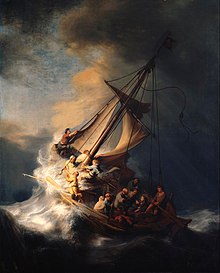Jacques Specx
 From Wikipedia the free encyclopedia
From Wikipedia the free encyclopedia
Jacques Specx | |
|---|---|
 Jacques Specx in 1650 | |
| 7th Governor-General of the Dutch East Indies | |
| In office 25 September 1629 – 27 September 1632 | |
| Preceded by | Jan Pieterszoon Coen |
| Succeeded by | Hendrik Brouwer |
| Personal details | |
| Born | 1588 Dordrecht, Dutch Republic |
| Died | 22 July 1652 Amsterdam, Dutch Republic |
| Nationality | Dutch |
| Occupation | Colonial governor |
Jacques Specx (Dutch: [ʑɑk ˈspɛks]; 1585 – 22 July 1652) was a Dutch merchant, who founded the trade on Japan and Korea in 1609.[1][2] Jacques Specx received the support of William Adams to obtain extensive trading rights from Tokugawa Ieyasu, the shōgun emeritus, on 24 August 1609, which allowed him to establish a trading factory in Hirado on 20 September 1609. He was the interim governor in Batavia between 1629 and 1632. There his daughter Saartje Specx was involved in a scandal. Back home in Holland Specx became an art-collector.
The Dutch, who, rather than "Nanban" were called "Kōmō" (紅毛, "Red Hair") by the Japanese, first arrived in Japan in 1600, on board the Liefde.
In 1605, two of the Liefde's crew, Jacob Quaeckernaeck and Melchior van Santvoort, were sent to Pattani by Tokugawa Ieyasu, to invite Dutch trade to Japan. The head of the Pattani Dutch trading post, Victor Sprinckel, refused on the ground that he was too busy dealing with Portuguese opposition in Southeast Asia.
1609 mission to Japan
[edit]Jacques Specx, the brother of Cornelius Specx, sailed on a fleet of eleven ships that left Texel in 1607 under the command of Pieter Willemsz Verhoeff. After arriving in Bantam two ships which were dispatched to establish the first official trade relations between the Netherlands and Japan.[3]

The two ships Specx commanded were De Griffioen (the "Griffin", 19 cannons) and Roode Leeuw met Pijlen (the "Red lion with arrows", 400 tons, 26 cannons). The ships arrived in Japan on 2 July 1609.[4]
Among the crews were the chief merchants Abraham van den Broeck and Nicolaas Puyck and the under-merchant Jaques Specx.
The exact composition of the delegation is uncertain; but it has been established that van den Broeck and Puyck traveled to the Shogunal Court, and Melchior van Santvoort acted as the mission's interpreter. Santevoort had arrived a few years earlier aboard the Dutch ship De Liefde. He had established himself as a merchant in Nagasaki.

The shōgun granted the Dutch the access to all ports in Japan, and confirmed this in an act of safe-conduct, stamped with his red seal. (Inv.nr.1a.).
In September 1609 the ship's council decided to hire a house on Hirado island (west of the southern main island Kiushu). Jacques Specx became the first opperhoofd (chief) of the new company's factory.[5]
In 1610, Specx sent a ship to Korea.[6]
Gallery
[edit]Specx owned five paintings by Rembrandt.[7]
Notes
[edit]- ^ "The Days Firando, Capital of the West". Hirado City Official Website. Archived from the original on 7 January 2010. Retrieved 7 January 2010.
- ^ "Western Contacts". Korea in the Eye of the Tiger. Korean History Project. Archived from the original on 13 June 2008. Retrieved 13 June 2008.
- ^ "Jacques Specx". De VOCsite (in Dutch). Retrieved 15 July 2018.
- ^ Opstall, M. E. van (1972). De reis van de vloot van Pieter Willemsz Verhoeff naar Azië 1607-1612 [The voyage of the fleet of Pieter Willemsz Verhoeff to Asia 1607–1612]. 's-Gravenhage: Nijhoff. p. 141.
- ^ Roessingh, M. P. H. (n.d.). English Summary of the Inventory of the Archives of the Dutch Factory in Japan, 1609–1860 (PDF). Nationaal Archief. Archived from the original on 14 August 2011.
{{citation}}: CS1 maint: unfit URL (link) - ^ "The Discovery of Korea". hendrick-hamel.henny-savenije.pe.kr. Retrieved 15 July 2018.
- ^ Hunt, Patrick (27 December 2005). "Rembrandt and Ovid: The Abduction of Europa, 1632; Metamorphoses II.849-59 and the Myth Tradition". Philolog. Archived from the original on 4 September 2008. Retrieved 4 September 2008.
References
[edit]- de Winter, Michiel (2006). VOC in Japan: Betrekkingen tussen Hollanders en Japanners in de Edo-periode, tussen 1602-1795 [VOC in Japan: Relations between the Dutch and Japanese in the Edo-period, between 1602 and 1795] (PDF) (in Dutch) – via uchiyama.nl.